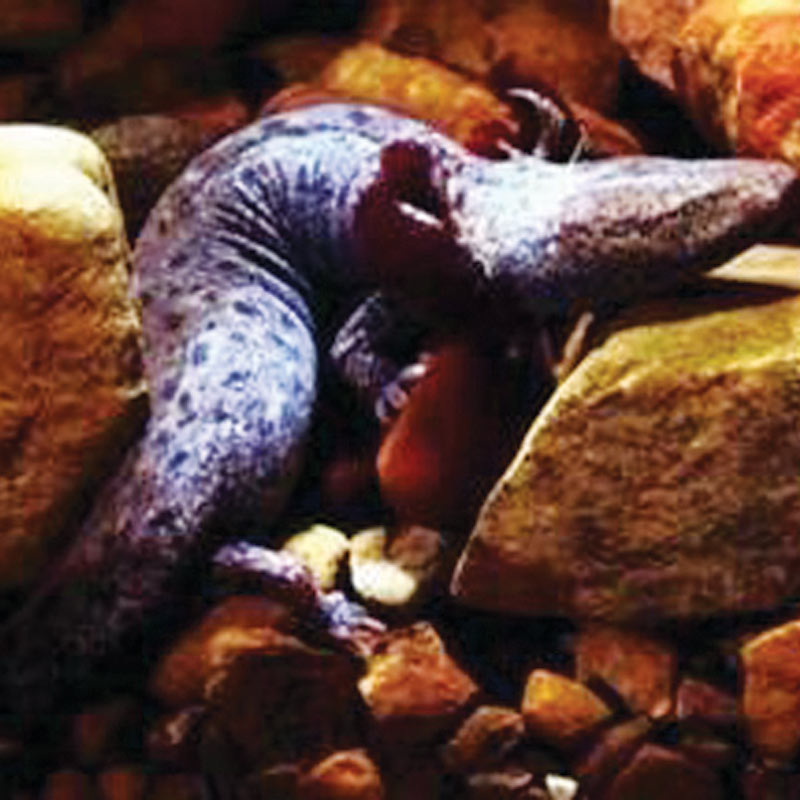Mudpuppies of the Water
The Great Outdoors | June 1, 2019

By Jackie Scharfenberg, Forest Naturalist, Wisconsin Department of Natural Resources
EEEEW! GROSS! CREEPY! WEIRD! DISGUSTING!
Ah come on! Once you get to know us, you’ll find us truly fascinating creatures! We mudpuppies (Necturus maculosus), or waterdogs, get our name because we live in water and someone thought our squeaky voices sound like a dog barking. We are one of only a few salamanders that make noise.
What We Look Like
We grow to 12-16 inches long making us Wisconsin’s largest salamander. We never grow out of our larva stage (neotenic), so we keep our busy, feathery, red external gills our whole lives. Our back color comes in shades of rusty brown or gray with a few to many dark black, blue-black spots or botches. Our bellies are whitish to gray and sometimes it has spots. Each short, stubby leg ends into four toes. Check out our flat heads and finned, short tails. The sexes look very similar, making it hard to tell the boys from the girls.
Our Habitat
Unlike other salamanders, we live out our whole lives on the bottom of lakes, slow streams, and large ponds going as deep as 90 feet. We lead secret lives hiding under large flat rocks and logs or among the crevices of riprap rock and weeds. We emerge at night to feed. In murky or weedy water, we may prowl during the day. We usually walk along the bottom but we can swim with fish-like motions.
Hunting and Our Diet
Since our small eyes only perceive light, we use our spectacular sense of smell to locate prey. We eat whatever we can catch including aquatic invertebrates like worms, insects, and snails. Our favorite is crayfish! Our diet also includes other amphibians, small fish, and fish eggs. We capture our prey by sucking and gaping food with our mouths. We then hold it with our small peg-like teeth before swallowing it down.
Mating and Young
We live mostly solitary lives, but in fall we come together to mate in shallow water. The males swim around the females and eventually deposit sperm packages on the ground. The female picks one up and stores in her body until spring. She excavates a nest cavity in a sheltered spot where she suspends 19-180 (average 60) eggs from the ceiling. Unlike any other salamander, she stays to protect the eggs until they hatch in one to two months (depends on water temperature) and the young leave the nest. After reaching a body length of eight inches in four to six years, our young begin to breed. We can live up to 20 years.
Our Lifestyle
We remain active all year. In winter and summer, we move to deeper waters. In spring and autumn, we hang out in more shallow water.
Sense organs along our body detect water movement and pressure changes. This helps us avoid critters like large fish, water snakes, wading birds, and turtles. Our very slimy skin allows us to often slip out of a predator’s grip.
Here’s one last tidbit.
We are the only host for the state-threatened salamander mussel. When you come across one of us, maybe now you will exclaim WOW, FASCINATING, WAY COOL!



